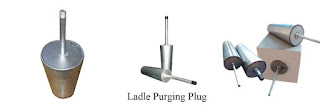The main factors affecting graphite electrode consumption
The consumption of graphite electrode in EAF steelmaking runs through the whole smelting process, and its consumption is affected by many factors. This paper only analyzes the operation of smelting process. 1.Poor quality or improper proportion of scrap steel leads to poor slagging effect and prolonged smelting time The increase of feeding times and drilling data increases the probability of damage and fracture of electrode bottom; Longer smelting time is the direct factor that leads to the increase of power consumption and electrode consumption and loss. 2.Two electric furnace power supply equipment and electrode specifications do not match Electric arc furnace power transmission is a high-current and low-voltage operation. If the capacity of the power supply equipment is too large and exceeds the limit load of the electrode, the electrode will be reddened from bottom to top within 5~10min after arc starting, and the boundary of the joint is very obvious and most o



